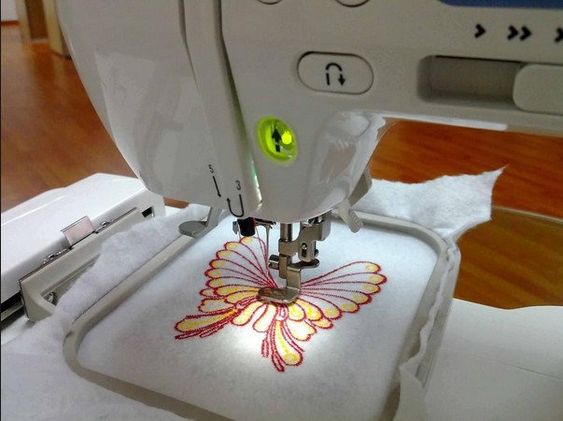Discover the Best Embroidery Digitizing Methods
When it comes to creating intricate and detailed embroidery designs, the process of embroidery digitizing is key. Embroidery digitizing is the process of converting a design into a digital file that can be read by an embroidery machine. The quality of the digitizing process can greatly impact the final result of the embroidery design. In this blog post, we will explore the best embroidery digitizing methods to help you achieve high-quality results in your embroidery projects.
Understanding the Basics of Embroidery Digitizing
Embroidery digitizing is the initial phase of revolving any pattern into a work of art; it requires employing specific software to create a digital plan that an embroidery machine can read. The digitizer’s job is to connect the stitching path, order, and crucial factors like density, underlay options, and stitch types. This foundational work is critical because it guarantees that the embroidered result will reflect the original design intention while balancing aesthetics with the limitations of thread and fabric.
Mastery of these foundational aspects paves the way for digitizing that breathes life into fabric, turning simple threads into detailed artworks. This section delves into the essence of digitizing, emphasizing the nuanced considerations that can make or break the transition from digital design to tangible embroidery.
The Key Elements of High-Quality Digitizing
When digitizing needlework, a few key components must be closely regulated to provide exceptional results. Stitch density is important; too few threads make the pattern look unfinished. While too many stitches cause the cloth to pucker. The underlay stitches, enhance the overall strength and elegance of the design and serve as a superb foundation for the topstitching. Are the unsung heroes of embroidery. Draw adjustment is another important factor that makes sure the design keeps. Its intended shape and size throughout the embroidery procedure by taking into consideration the natural pull of the cloth and thread. Fabric type significantly influences these settings, as different materials react uniquely under the stress of embroidery.
For example, denser fabrics may require adjustments in stitch length or density to prevent distortion. Thus, a digitizer’s ability to harmonize these elements. Adapting their technique to the design’s needs and fabric’s characteristics is crucial for transcending mere digital conversion, achieving embroidery that is both aesthetically pleasing and structurally sound.
Choosing the Right Software for Embroidery Digitizing
The quality and convenience of the embroidery digitizing project will be great. And directly affected by the program you choose, so choosing wisely is essential. In addition, being packed with functions as well as offering an extensive set of tools for accurate stitch editing and customization. The perfect program should be easy to use and appropriate for both beginner and expert digitizers. It should have capabilities that enable precise samples of how patterns appear when embroidered. As well as acceptance of a range of file formats to ensure wide integration with embroidery machines. Wilcom, Pulse, and Hatch Embroidery are a few of the top options. Each has special advantages catered to various digitizing requirements and tastes. Whether you’re working on basic assignments or complex designs. Give tools that meet your needs priority to ensure that your digitization process goes as smoothly as possible.
Tips and Tricks for Optimizing Your Digitizing Process
Maximizing efficiency and quality in your digitizing process requires adopting a strategic approach. One key strategy is starting with a high-resolution image, which ensures clarity and detail in your digitized design. Reducing complexity in designs not only lowers the stitch count but also enhances the embroidery’s readability, making it more visually appealing on various fabrics. Color accuracy plays a crucial role; select thread colors that closely match the original design to maintain its integrity.
Try out your digital design on a comparable but less expensive piece of fabric so you may make any necessary changes before the final embroidery, which will save you time and money. Better results may be obtained by continuously improving your skills via practice and experimentation with various digitization processes. When carefully adhered to, these stages provide a guide for optimizing your digitizing workflow and guaranteeing that every job is completed with accuracy and excellence.
How to Evaluate and Choose a Professional Digitizing Service
When choosing a professional digitizing service, there are several aspects to take into account. It’s critical to look at the service’s background and expertise in the digitizing of embroidery. Choose a service provider that’s portfolio has variety and covers an extensive range of styles and complexity. This indicates that they are capable of meeting your particular digitization requirements. Another important factor is prompt arrival; be sure the service can fulfill your deadlines without sacrificing quality. Examine their quality assurance procedures closely as well. These can protect the money you invested by offering guarantees or changes.
Testimonials and reviews from previous clients can provide important information about a company’s dependability and customer satisfaction levels. Working with a service that prioritizes communication is also crucial since it makes a project. Execution goes more smoothly and enables real-time updates and modifications. Last but not least, weigh the price versus the value received. Make sure it fits within your spending plan and meets the required standards for skill and service. You can choose the one that best meets your digitization needs by carefully weighing these factors.
Conclusion
Embroidery digitizing stands as the foundational step toward realizing vibrant and detailed embroidery works. The journey from a concept to a wearable or displayable piece hinges on mastering digitizing practices, incorporating advanced software choices, and implementing strategic tips for enhancing the digitizing process. Through understanding essential digitizing aspects, leveraging the right tools, and employing techniques aimed at refining outcomes, artisans can significantly uplift the quality of their best embroidery digitizing projects.
Whether the path involves self-digitizing endeavors or engaging with seasoned professional services, the focus should always be on achieving precision and excellence in digitization. This commitment to quality not only brings designs to life with remarkable fidelity but also pushes the boundaries of what’s possible in the realm of embroidered art. Embracing the best in embroidery digitizing opens up a world of creative potential, setting the stage for projects that truly stand out.


